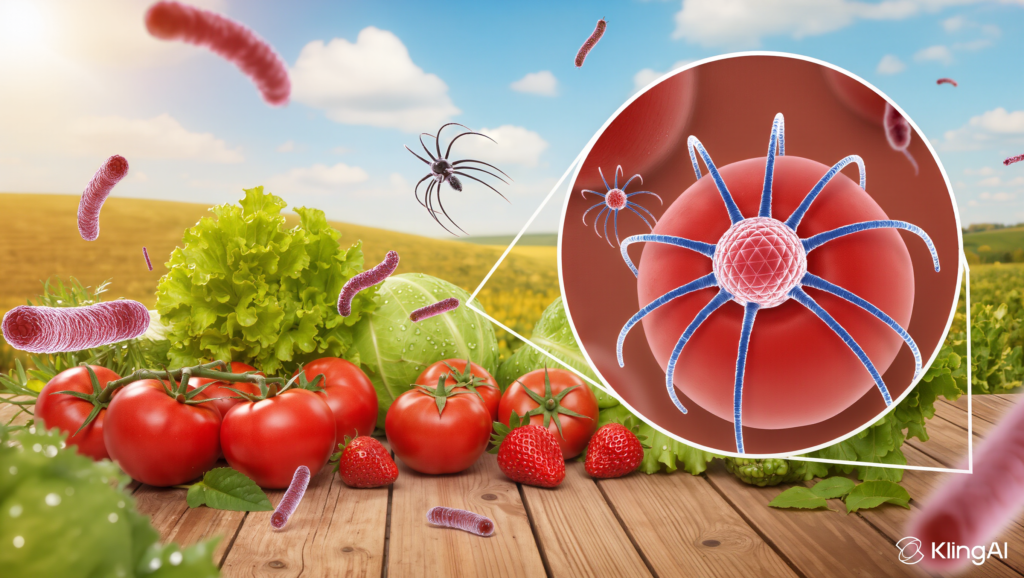Let’s get one thing straight: cilantro is the ultimate culinary plot twist. You’re innocently enjoying your taco or slurping a bowl of pho, when suddenly—BAM!—your taste buds are ambushed by what can only be described as a mouthful of soap. Meanwhile, your friend across the table is raving about how fresh and zesty the cilantro is. What gives? Is this some cosmic joke, or is there actual science behind this leafy love-hate relationship?
Grab your detective hat (and maybe a breath mint), because we’re diving deep into the weird, wild, and surprisingly hilarious world of cilantro aversion. Spoiler: it’s not just in your head—it’s in your genes, your nose, and maybe even your childhood memories.
Cilantro: Culinary Hero or Villain?
Cilantro, also known as coriander in many parts of the world, is a staple in Mexican salsas, Indian chutneys, Thai curries, and more. For some, it’s the herb that makes a dish sing. For others, it’s the reason they’re singing the blues. But why does this humble herb divide humanity more than pineapple on pizza?
The “Soapy” Situation: It’s All About Aldehydes
Let’s get science-y for a second. The main culprit behind cilantro’s controversial flavor is a group of compounds called aldehydes. These are the same chemicals found in soaps and cleaning agents, and—plot twist—they’re also naturally present in cilantro leaves. For most people, these aldehydes add a refreshing, citrusy note. But for others, it’s like licking a bar of Irish Spring.
So, why do some people taste soap while others taste sunshine? The answer, my friend, is blowing in your nose—specifically, in your olfactory receptors.
The Genetic Plot Twist: Meet OR6A2
Here’s where things get wild. Scientists have pinpointed a gene called OR6A2 that plays a starring role in cilantro aversion. This gene encodes an olfactory receptor that’s especially sensitive to aldehydes—the same ones in cilantro and, you guessed it, soap. If you have a certain variation of the OR6A2 gene, your nose and brain team up to send an urgent message: “Warning! This tastes like cleaning supplies!”
- Britannica explains that this genetic quirk is only found in a small percentage of the population, but the numbers vary by region. For example, East Asians have the highest incidence (nearly 20%), while it’s much lower in places like Central America and India, where cilantro is a beloved ingredient.
- 23andMe found that 14-21% of people of East Asian, African, and Caucasian ancestry disliked cilantro, compared to just 3-7% of South Asian, Hispanic, or Middle Eastern folks.
So, if you’re a cilantro-hater, you can thank (or blame) your ancestors and their olfactory genes for your soapy woes.
Twin Studies: Nature, Nurture and Cilantro
Still not convinced it’s in your DNA? Twin studies have your back. Research at the Monell Chemical Senses Center found that about 80% of identical twins shared the same cilantro preference, while fraternal twins only agreed about half the time. That’s strong evidence that genetics plays a big role—though it’s not the whole story.
Culture Shock: Why Cilantro-Haters Are Rare in Some Countries
If genetics were the only factor, we’d see the same cilantro aversion rates everywhere. But that’s not the case. In countries where cilantro is a culinary superstar—think Mexico, India, and Thailand—far fewer people report a soapy taste. Why? It’s partly because the “cilantro-hating” gene is less common in these populations, but culture and exposure matter too.
If you grow up eating cilantro in everything from salsa to soup, your brain might learn to love—or at least tolerate—the flavor. There’s even evidence that repeated exposure (especially to crushed cilantro rather than whole leaves) can help some people overcome their aversion.
So, if you’re determined to join the cilantro fan club, don’t give up! Your taste buds might just need some training.
The Psychology of Cilantro Hatred: More Than Just Genes
Let’s not forget the emotional side of this leafy debate. For some, cilantro aversion is as much about memories and associations as it is about molecules. Maybe you had a traumatic run-in with a cilantro-heavy dish as a kid, or maybe your family’s cooking traditions didn’t include the herb. As one writer put it, “The herb became a vector of the complicated emotional landscape between generations.
And let’s be honest: there’s a certain camaraderie among cilantro-haters. With online communities, memes, and even haiku poetry dedicated to cilantro loathing, it’s become a badge of honor for many. If you’re a card-carrying member of the “I Hate Cilantro” club, you’re definitely not alone.
Can You Learn to Love Cilantro? (Or at Least Tolerate It?)
Good news for the cilantro-curious: there’s hope! Some studies suggest that repeated exposure to cilantro, especially when it’s chopped or crushed, can help reduce the soapy sensation1. Crushing the leaves releases different aromatic compounds, which might help mask the offending aldehydes.
Tips for training your taste buds:
- Start small: Add a tiny pinch of chopped cilantro to dishes you already love.
- Mix with other herbs: Combine cilantro with parsley, mint, or basil to mellow out the flavor.
- Try it cooked: Cooking cilantro can tone down its pungency and make it more palatable.
- Be patient: Your taste buds and brain might need time to adjust.
But hey, if you never come around, that’s okay too. There’s plenty of parsley in the sea.
Fun Cilantro Facts: Impress Your Friends (or Annoy Your Enemies)
- Julia Child famously hated cilantro and said she would pick it out of her food and throw it on the floor.
- There’s a Facebook group called “I Hate Coriander” with over 280,000 members.
- The same aldehydes in cilantro are found in stinkbugs (yum!).
- In Chinese, cilantro is called “fragrant vegetable”—unless you’re a hater, in which case it’s “stinky vegetable”.
- Some people describe cilantro as tasting like metal, dirt, or even crushed bugs. To each their own!
The Final Verdict: Cilantro—Love It or Leave It?
So, why do some people hate cilantro? The answer is a spicy blend of genetics, culture, psychology, and maybe a dash of childhood trauma. If you’re a cilantro-hater, you’re not broken—you’re just wired a little differently. And if you’re a cilantro-lover, don’t take it personally when your friend picks the green stuff out of their burrito.
Whether you’re Team Cilantro or Team Soap, one thing’s for sure: food is personal, and our taste buds are as unique as our fingerprints. So go ahead—embrace your flavor quirks, celebrate your weirdness, and never let anyone shame you for your herb preferences.
Bottom line: If cilantro tastes like soap, it’s not you—it’s your genes. Or your culture. Or your childhood. Or maybe just the universe having a little fun with your taste buds. Either way, pass the guac—and hold the cilantro (or not)!
Sources
- [Britannica: Why Does Cilantro Taste Like Soap to Some People?]1
- [23andMe Blog: Cilantro Taste Gene]2
- [Nature: Soapy taste of coriander linked to genetic variants]3
- [Wikipedia: OR6A2]4
- [PMC: Genetic Analysis of Chemosensory Traits in Human Twins]5
- [Cleveland Clinic: Love It or Hate It — The Great Cilantro Debate]7








